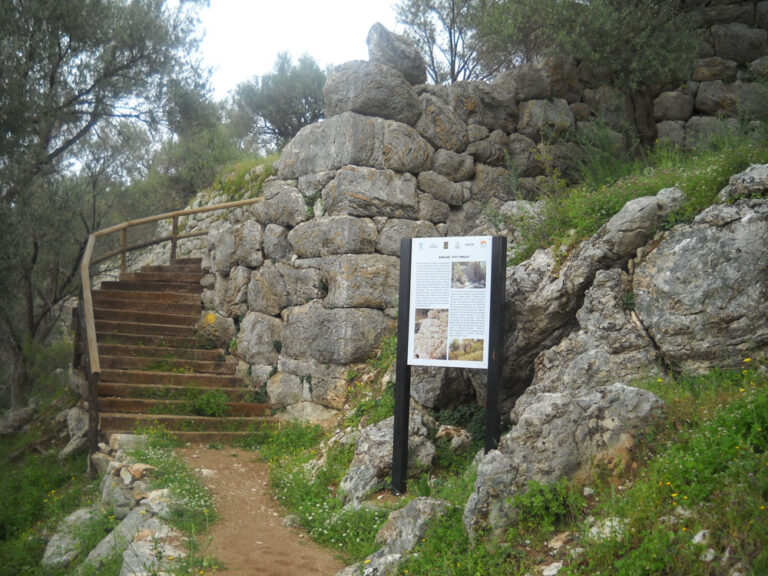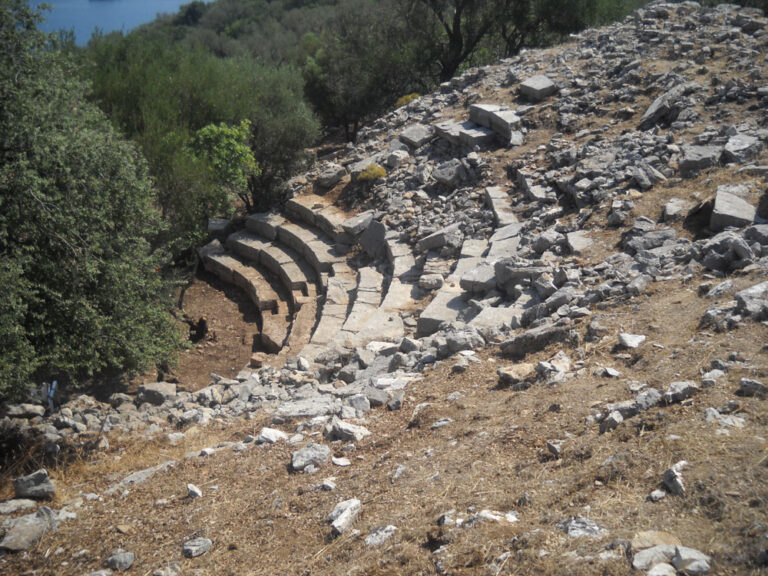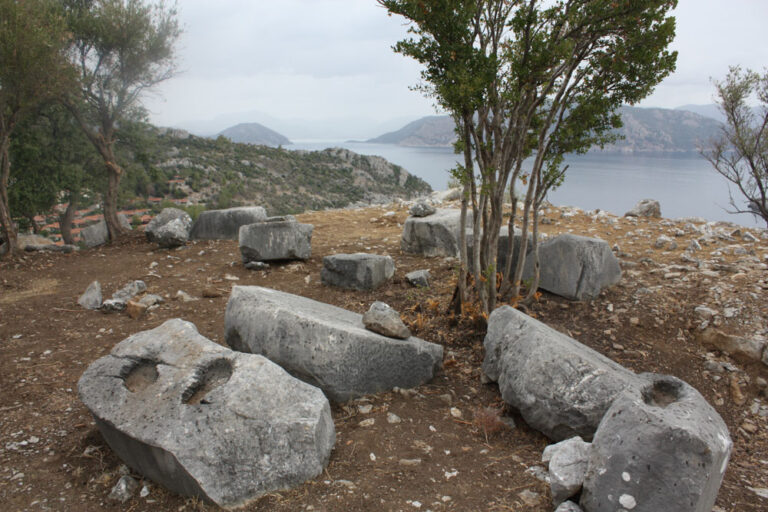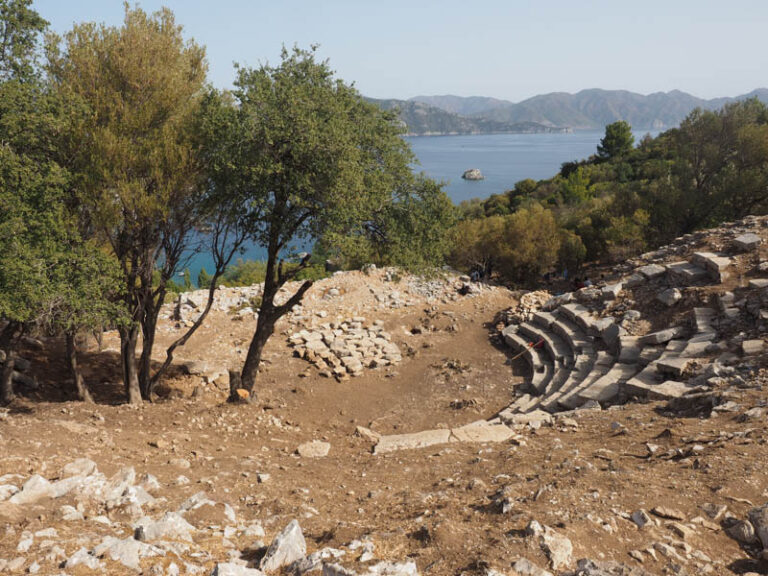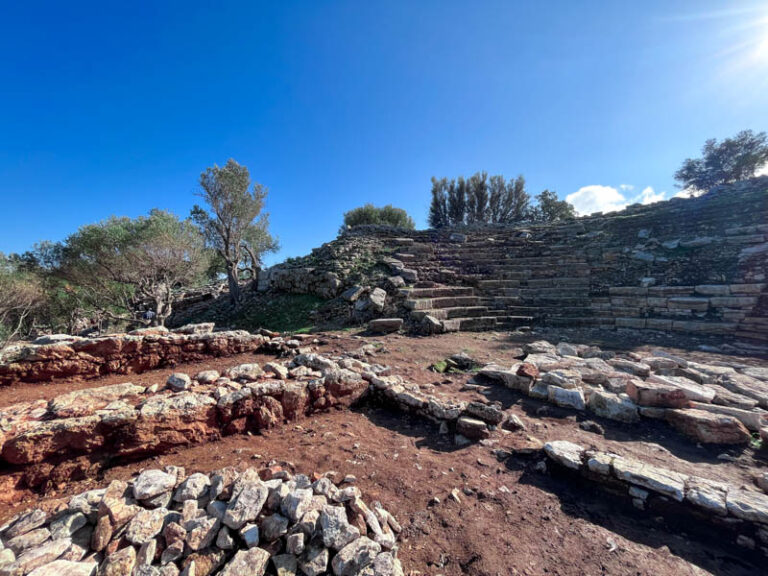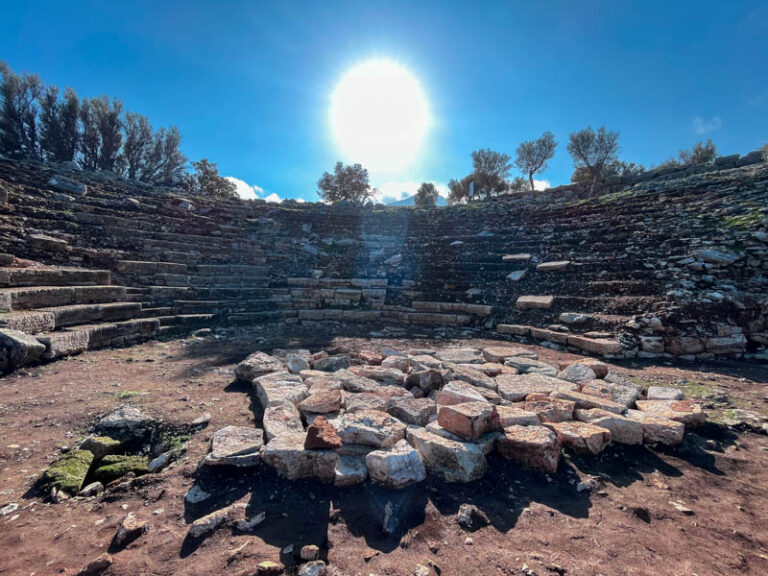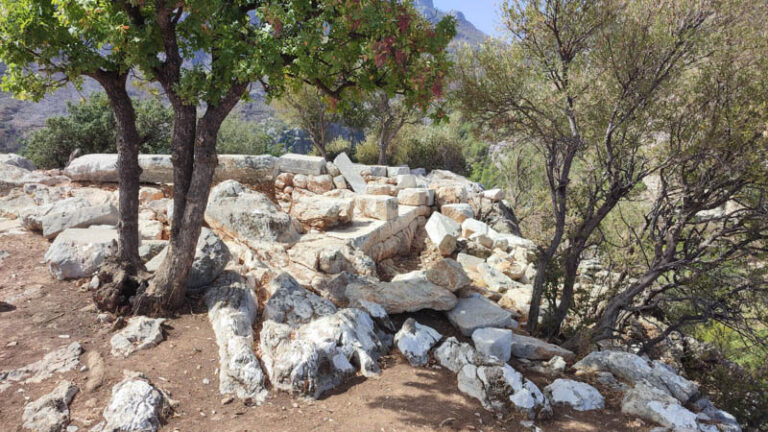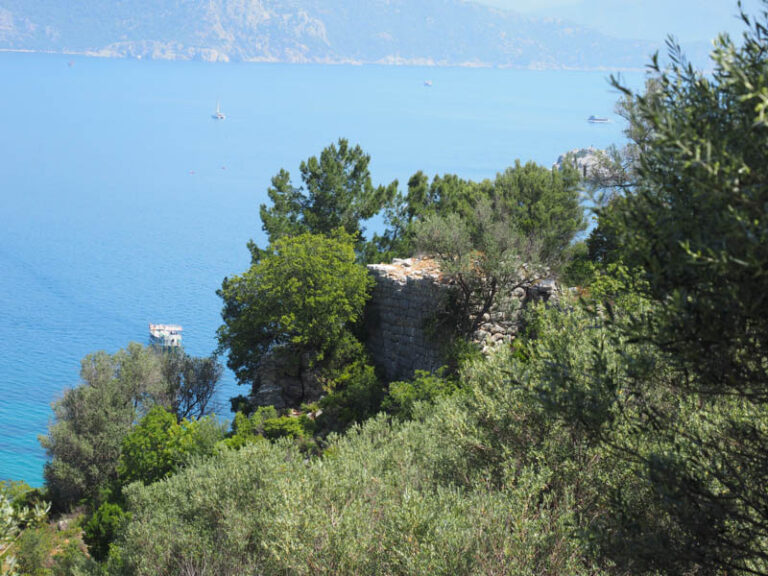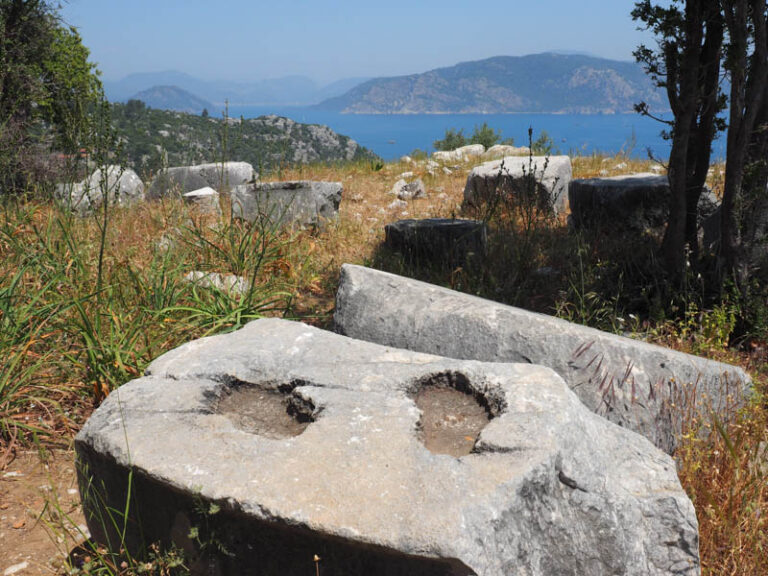Amos, the most important port city of the Carian Civilization, is located in Turunç, 20 km from Marmaris. In the city where excavations are still continuing, there are ruins dating back to ten thousand years BC. One of the first written contracts in history was found in Amos. You can see the historical artifacts excavated from Amos in Marmaris Castle.
Amos consists of a theatre, a temple and some statue bases on top of a hill. Bilge Umar states that Amos has some meanings in the Hellenic language. According to him, it is impossible for Amos to be chosen as a city name, and It is a word that comes from Luwian or Carian languages in 2000 BC. It is thought to be derived from the temple of the Mother Goddess. However, there is another, much more interesting argument for the name Amos. Amos is also the name of one of the 12 minor Prophets among the 55 prophets whose names are mentioned in the Tanakh among more than 700 prophets mentioned in the Old Testament and considered sacred by the Jews. The remains of the city were encountered on the hills that make up Hisarburnu. In the northeast, the remains of the theater, whose seating levels have survived, can be seen. One of the three theaters in the Rhodes Peraia, is in Amos.
During his excavations in the area (1948), Prof. George E. Bean uncovered four fragments of inscriptions dealing with the terms of three separate leases from around 200 BC. It is understood from the inscription that the people of Amos worshiped Apollo under the name "Samnaios Apollo". The Altar of Dionysus proves the existence of an intense wine production in Amos. The coexistence of the two opposing cults, the cults of Dionysus and Apollo, is, first of all, a sign that Amos is a typical Carian city. As it is known, the Carians, who settled in the South Aegean approximately in the 11th century BC, had a very close socio-cultural exchange with the Greek civilization, which came here a few centuries later, and gradually came under their rule. However, they did not hesitate to oppose these new rulers at every opportunity they found.
The walls surrounding the city are 2 m. wide and their height reaches 3-4 m in some places. The walls were reinforced with bastions in places, and the main entrance gate in the north has survived to the present day in very good condition. Apart from the walls in the northwest, down the slopes, the necropolis area draws attention. The tombs here are of Carian type and most of them are burial pits.
Since 2019, with the contributions of Marmaris Chamber of Commerce and Marmaris Municipality, excavation and rescue activities have been continuing in the ancient city of Amos in cooperation with Muğla University and Marmaris Museum.
For detailed information, you can visit. https://kultur.mto.org.tr/ web page




